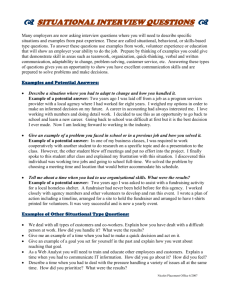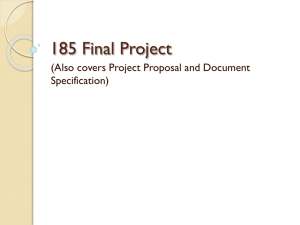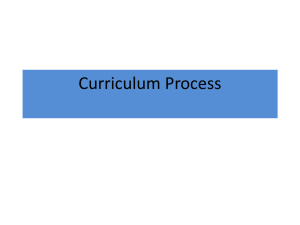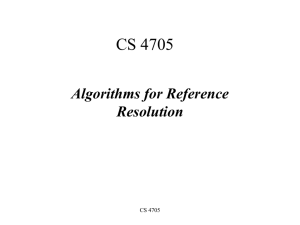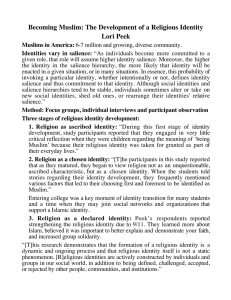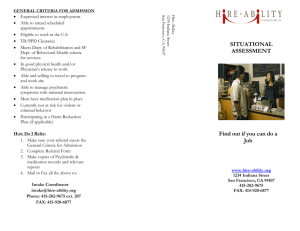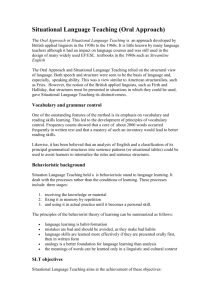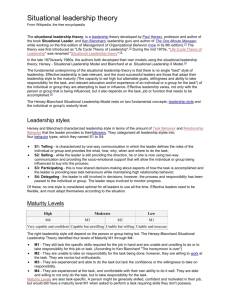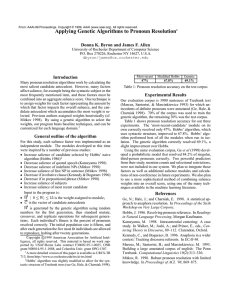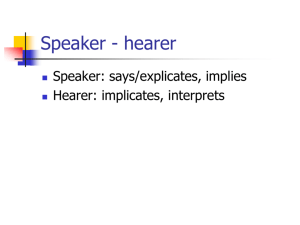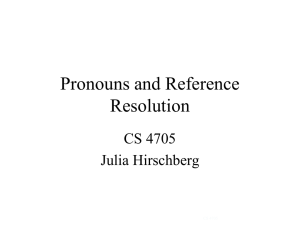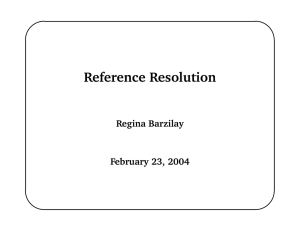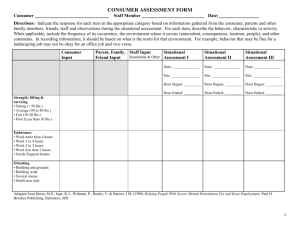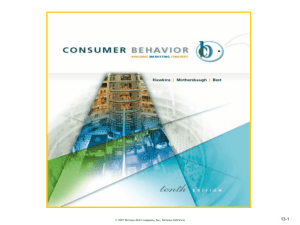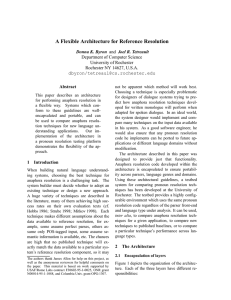Taking situational factors into account when resolving anaphora: an
advertisement
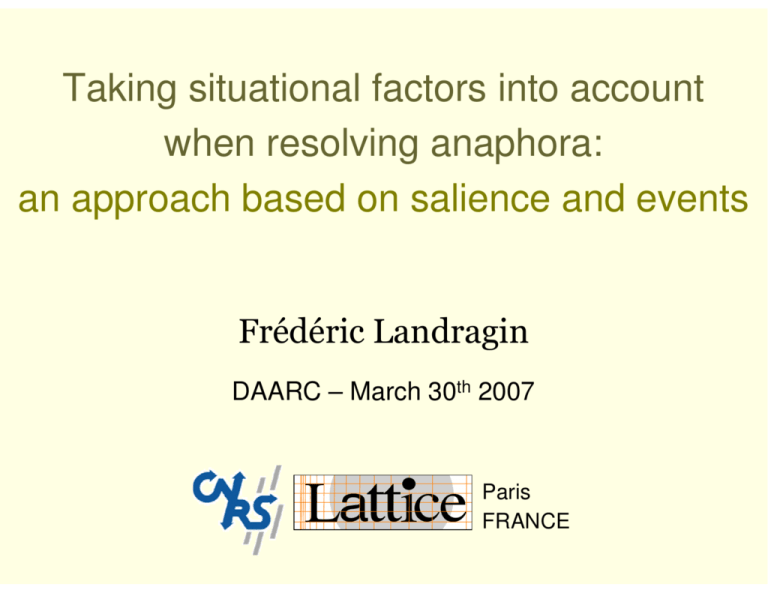
Taking situational factors into account when resolving anaphora: an approach based on salience and events DAARC – March 30th 2007 Paris FRANCE Content ! # # " $ % & ! ' $ " " 2 3 Initial example ( ' . )*+,- / 0 . . 12 0 3 4 $ 2 41 0 5 " & 2 40 " 0 0 4 Anaphora versus deixis 2 4 2 40 402 402 40 2 0 2' 6 2 402 4 ( " ( " 0 0 - . 4 - Ambiguous variants of Isard’s example % . / 0 .27 4 . .2 0 3 4 % ). 8. / " .2 " " 0 3 4 % 9 5 6 Problems and objectives ): ( ( 8:' - 2 4 0 ;: 0 <:7 = > ( - > Classical anaphora resolution methods ): ' ( - > 8:' > " " 0 :' 0 ;: ' 0 ( " <:& 0 > : ? – – – – – – 0 the factors sum or average the optimal factor the weighed average of factors (Alshawi 1987) the procedural methods (Mitkov 1998) the statistical methods (Pattabhiraman 1993) the dynamic methods (Lappin & Leass 1994) 1 7 8 Formal linguistic factors of salience & :& (:: -:' " : & & : @ : : : & ( 2 & " > 1 0 : & 9 :7 : " & B A : A A : 94-: Semantic linguistic factors of salience & 9 " ' ' 2 ( & 4 A 2 -: 4: " ' 0 0:: 0 0 0 :$ 0 0 : & " @ & A @ ( 0:: @ -: ( -: " ' :% & " A $ : 0 A A 0 " A ( 9 -: Taking situational aspects into account ): . ( 10 / 0 / " 9- → 8:C ( = 0 → ;:# 0 0 0 0 0 ( 2 " 0 9- 0 4 0/ " - → <:$ ( 0 A/ " → A - 11 Situational events " ): " 8: " " ;: " " 0 <: & ): " " 1 ( →2 0 ( 5 0 0 -6 " " 4- → = 12 Situational events (cont.) 8: " " " 1 " " D " D →2 ;: " 402 40 : " " @ 1 1 5 →2 402 0 , 40 : <: " 1 →2 @ → 0 4 13 Axes for the confrontation ): 8: ;: <:& ,:& E: +:$ > ): > 5 & 5 8: ' 0 : : : 1 14 Axes for the confrontation (cont.) ;: & "2 3 4 <:& % " : 1 0 0 " ,:& " $ 12 "3 402 1 / " 8 > 1 ) 80 0 8 E: ' 0 ( - 4: 15 Back to our initial example child’s gesture “Rex seems to be hungry” > time “be careful, he might bite you!” F F F ) ) F ) ) ) F F ) Conclusion and future work ):% 0 8:& 0 : ;:' <:% " 1 9 16


